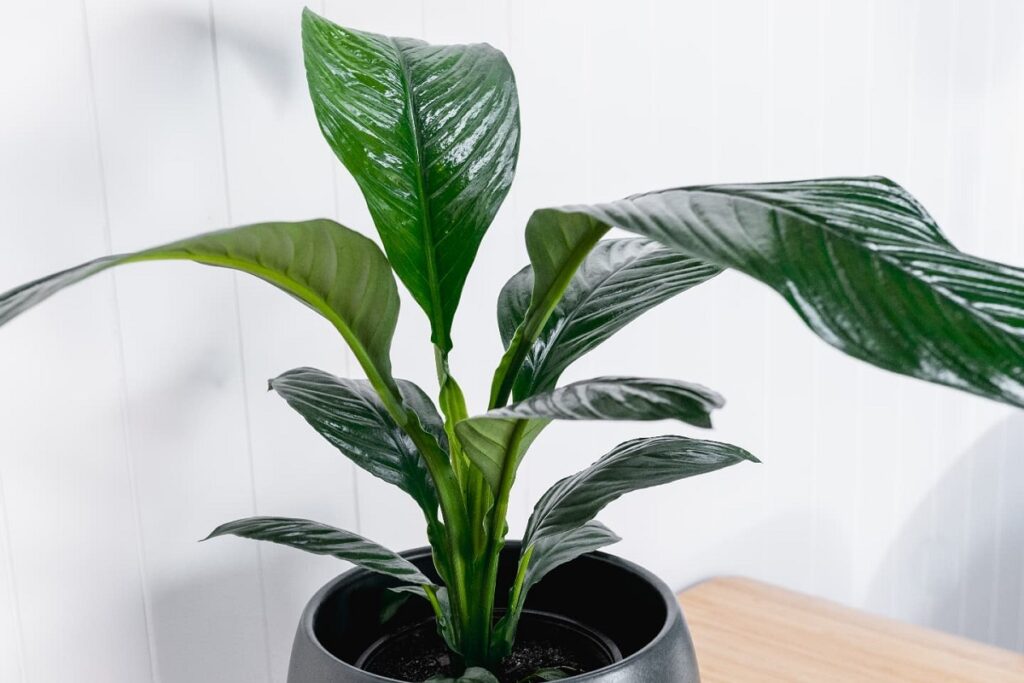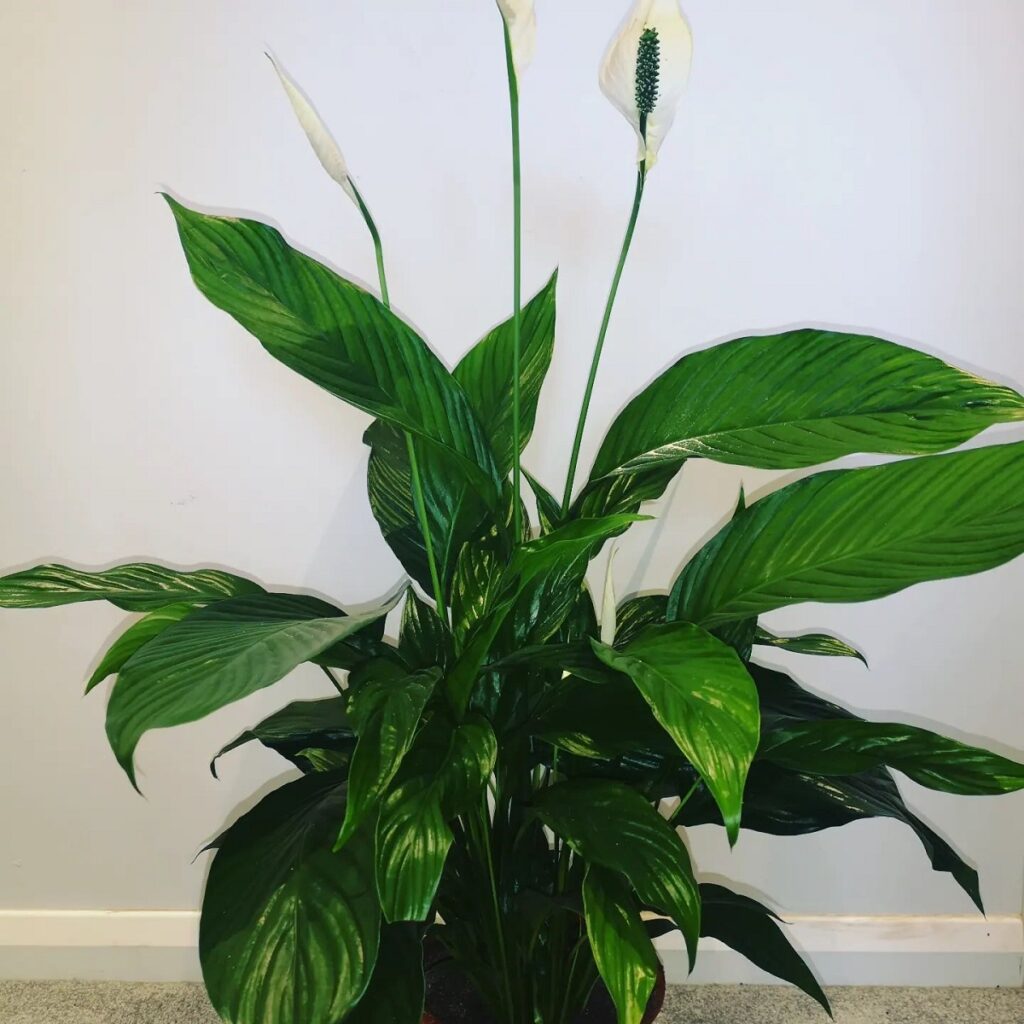Are you a plant lover looking for an elegant addition to your indoor space? Look no further than the Sensation Peace Lily! This popular houseplant is known for its distinctive white flowers and air-filtering properties, making it both beautiful and beneficial for your home. However, caring for this plant can be tricky, as it requires specific conditions to thrive.

In this Sensation Peace Lily care guide, we will provide you with all the information you need to keep your plant healthy and happy. From watering and fertilizing to pest control and propagation, we’ve got you covered. With our tips and guidance, you can enjoy the beauty of this stunning plant while ensuring it thrives in its environment. So let’s dive into the world of Sensation Peace Lilies together!
Contents
About Sensation Peace Lily
The Peace Lily is a popular tropical plant that belongs to the Araceae family. It originated in the tropical rainforests of South and Central America and has been used as an ornamental plant since the Victorian era. Sensation is a cultivar of the Peace Lily that has larger leaves and a more robust appearance than the typical Peace Lily.
The Sensation Peace Lily has long, lance-like, glossy, dark green leaves that grow up to 2 feet (60 cm) long and 5 inches (12 cm) wide. The leaves are arranged in an upright, vase-shaped habit. The plant produces elegant, white, hooded flowers that are borne on a spike-like inflorescence called a spadix. The spadix is surrounded by a white, waxy, boat-shaped bract called a spathe. The flowers are followed by small, fleshy, green berries that turn purplish-black when ripe.

Sensation Peace Lily Care Guide
To properly care for your Sensation Peace Lily, it is important to understand its needs.
Light
If you want your plant to thrive, place it in a spot that’s shady but still bright enough for you to read a book without turning on the lights. The Peace Lily Sensation prefers indirect sunlight or partial shade, as direct sunlight can damage its leaves. You should be careful when choosing the placement of your plant because exposure to artificial lighting can also cause problems. If you need to use artificial lighting, make sure it is not too close to the plant and that it does not stay on for more than 12 hours a day.
Adjusting your plant to natural light may also require some care. When first bringing home a new Peace Lily Sensation, gradually introduce it to brighter conditions over several days or weeks. Sudden changes in light intensity can shock plants and lead them to wilt or drop leaves. Conversely, if your peace lily has been used to brighter light conditions and then moved into a darker space, it may become etiolated (stretched out) as it tries to reach for more light. To avoid these issues, monitor how much natural light your peace lily receives and adjust accordingly with care.
Water
Proper watering is crucial for the survival and well-being of your beloved Sensation Peace Lily. Overwatering or underwatering can cause significant damage to the plant, so it’s important to find a balance. The frequency of watering will depend on factors such as temperature and humidity levels in your home. As a general rule of thumb, water your Peace Lily once a week, but make sure the soil has dried out slightly before doing so.
To prevent root rot, it’s essential to ensure proper drainage techniques are used when planting your Peace Lily. Make sure there are sufficient drainage holes at the bottom of the pot and use a well-draining potting mix to help excess water escape easily. When watering, be mindful not to let water sit in the saucer for too long as this can also lead to root rot. Remember that overwatering is more detrimental than underwatering, so always err on the side of caution and allow the soil to partially dry out before watering again.

Soil
You’ll want to pay close attention to the soil your plant is growing in, as it can have a huge impact on the health and longevity of your beautiful indoor companion. The Peace Lily Sensation requires a well-draining and aerated soil mixture that retains moisture but doesn’t become waterlogged. A good blend includes peat moss, perlite, vermiculite, and coarse sand to ensure optimal drainage.
It’s important to keep an eye on the pH levels of your soil as well. Ideally, you want the pH range for peace lilies to be between 6.0-7.5 for optimal growth and nutrient uptake. If you notice your plant isn’t thriving or has yellowing leaves, it may be due to imbalanced pH levels in the soil. You can test this with a simple home kit from any garden center or online retailer. By keeping an eye on these factors, you’ll give your Peace Lily Sensation the best possible chance at living a long and healthy life in your home!
Fertilizer
Now that you know how to choose the right soil for your Peace Lily Sensation, let’s talk about its fertilizer needs. To keep your plant healthy and thriving, you’ll need to provide it with the necessary nutrients. Luckily, there are plenty of organic options available on the market that won’t harm your plant or the environment.
The frequency and amount of fertilizer application will depend on the season and growth rate of your plant. Typically, in spring and summer when growth is most active, you can fertilize once a month with an organic houseplant fertilizer diluted to half strength. During fall and winter when growth slows down, reduce the frequency to every other month or stop altogether. Be sure not to over-fertilize as this can lead to salt buildup in the soil which can damage your plant’s roots. When applying fertilizer, make sure it reaches all parts of the soil evenly by watering immediately after application.
Humidity and Temperature
Maintaining the right humidity and temperature for your beloved Peace Lily Sensation can be a challenge, but it’s worth it to see those beautiful white flowers bloom. Humidity management is essential for this tropical plant. The ideal humidity level for your Peace Lily should be around 50-60%. If you live in an area with low humidity, consider using a humidifier or placing a tray of water near the plant to increase moisture levels. However, make sure not to overwater the plant as excess moisture can cause root rot or mold growth.
Temperature control is also important for indoor climate optimization. The ideal temperature range for peace lilies is between 64 and 68 degrees F, so try to keep your home within this range if possible. Avoid placing your Peace Lily near windows or doors that may expose it to drafts, which can cause damage to the leaves and flowers. In warmer months, you may want to move your plant away from direct sunlight or use shades to protect it from excessive heat. By maintaining appropriate humidity and temperature levels, you can ensure that your Peace Lily thrives in its new home.

Pests and Diseases
It’s important to be aware of potential pest and disease issues that can affect your plant’s health, as these can quickly become serious problems if left unaddressed. One common pest that affects peace lilies is mealybugs, which appear as small white cottony masses on the leaves or stems. To prevent mealybugs from infesting your plant, it’s important to regularly inspect your plant for signs of infestation and promptly remove any affected parts by wiping them with a damp cloth dipped in rubbing alcohol. Insecticidal soap or neem oil can also be used to treat an infestation.
Another issue that may arise is mold growth on the soil surface due to excessive moisture, improper drainage, or lack of proper ventilation. To treat mold growth, remove the affected soil and replace it with a fresh potting mix. You should also ensure proper drainage by using a pot with holes at the bottom and placing a layer of rocks or gravel at the bottom before adding soil. Additionally, managing brown spots caused by sunburn involves providing partial shade for your plant during hot hours of the day and ensuring adequate humidity levels are maintained through regular misting or the use of a humidifier. By being proactive in addressing these common issues, you can help keep your Peace Lily Sensation healthy and thriving for years to come.
Pruning
To keep your plant healthy and looking its best, you should regularly prune any yellow or dried-up leaves at the base of the stalks. This will not only improve the overall appearance of your Peace Lily Sensation but also prevent the spread of diseases and pests. Pruning techniques include using clean scissors to cut off the dead or damaged leaves close to the base without damaging surrounding healthy foliage. Additionally, pruning can help control plant size and shape by removing unwanted growth.
Potting and Repotting
When you repot your Peace Lily Sensation, you’ll not only refresh the soil and provide more space for growth, but also give your plant a new lease on life. Repotting frequency depends on the size of the pot and how fast your plant grows. Generally, it is recommended to repot every 1-2 years or when roots start to emerge from the drainage holes. Choose a pot that is slightly larger than the current one and has good drainage holes. Avoid pots that are too big as they can lead to waterlogging and root rot.
Choosing the right potting mix ingredients is essential for the proper growth of your plant. A well-draining soil mix with good moisture retention properties is ideal. You can either use a commercial potting mix or make your own by mixing equal parts peat moss, perlite, and vermiculite. When repotting, gently remove any dead or yellow leaves and loosen up any tangled roots before placing them in a fresh soil mix. Water thoroughly after repotting and keep in partial shade until new growth emerges.
Conclusion
You now know everything you need to keep your Sensation Peace Lily healthy and thriving. Remember to place it in a warm and humid location with indirect sunlight, use a well-draining potting mix, water it regularly but avoid overwatering, fertilize every two months during the growing season, and protect it from common pests. Don’t forget to propagate your plant when needed by dividing or taking stem cuttings. With proper care, your Sensation Peace Lily will continue to add elegance and air-filtering benefits to your indoor space for years to come. Enjoy!
